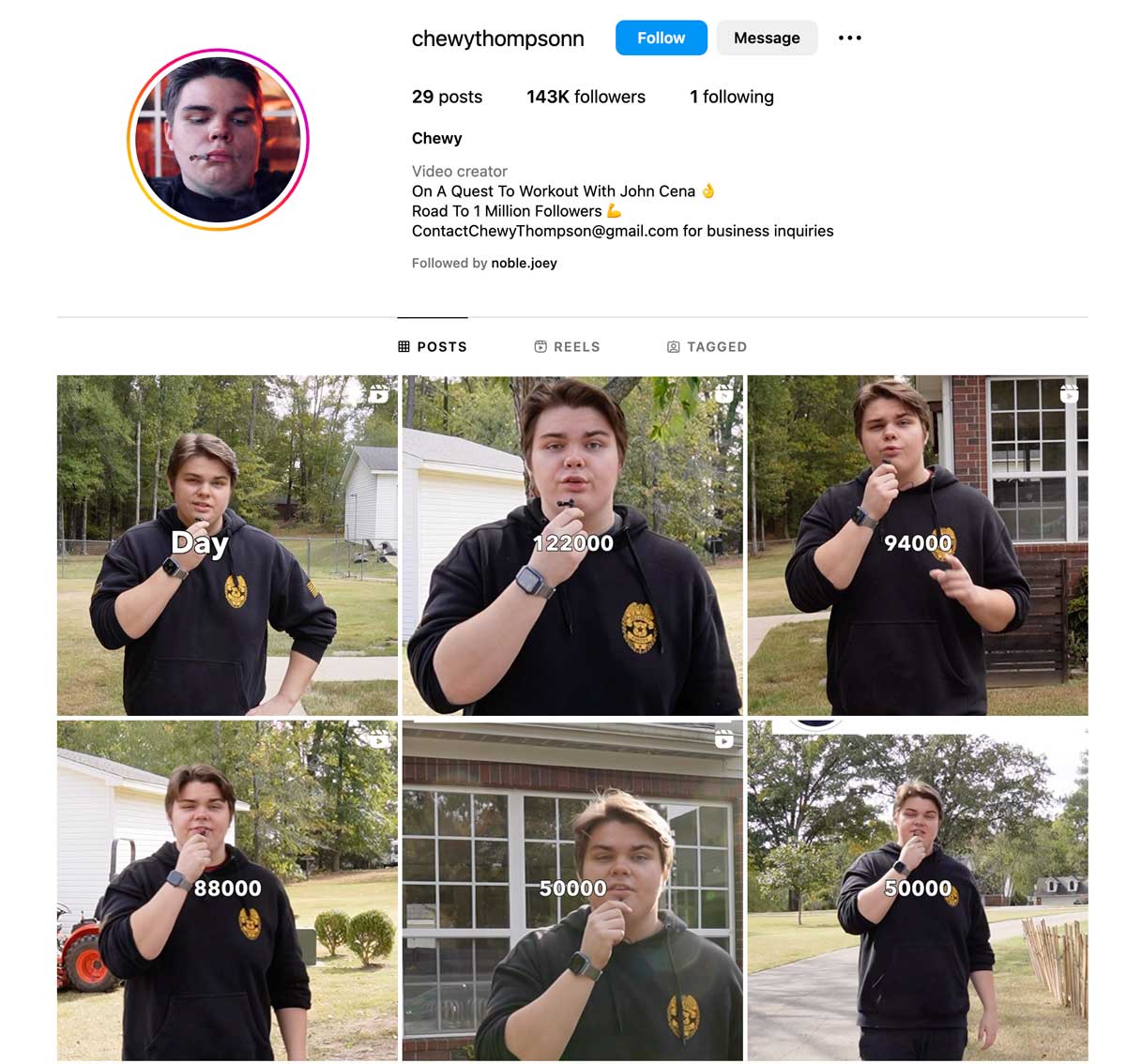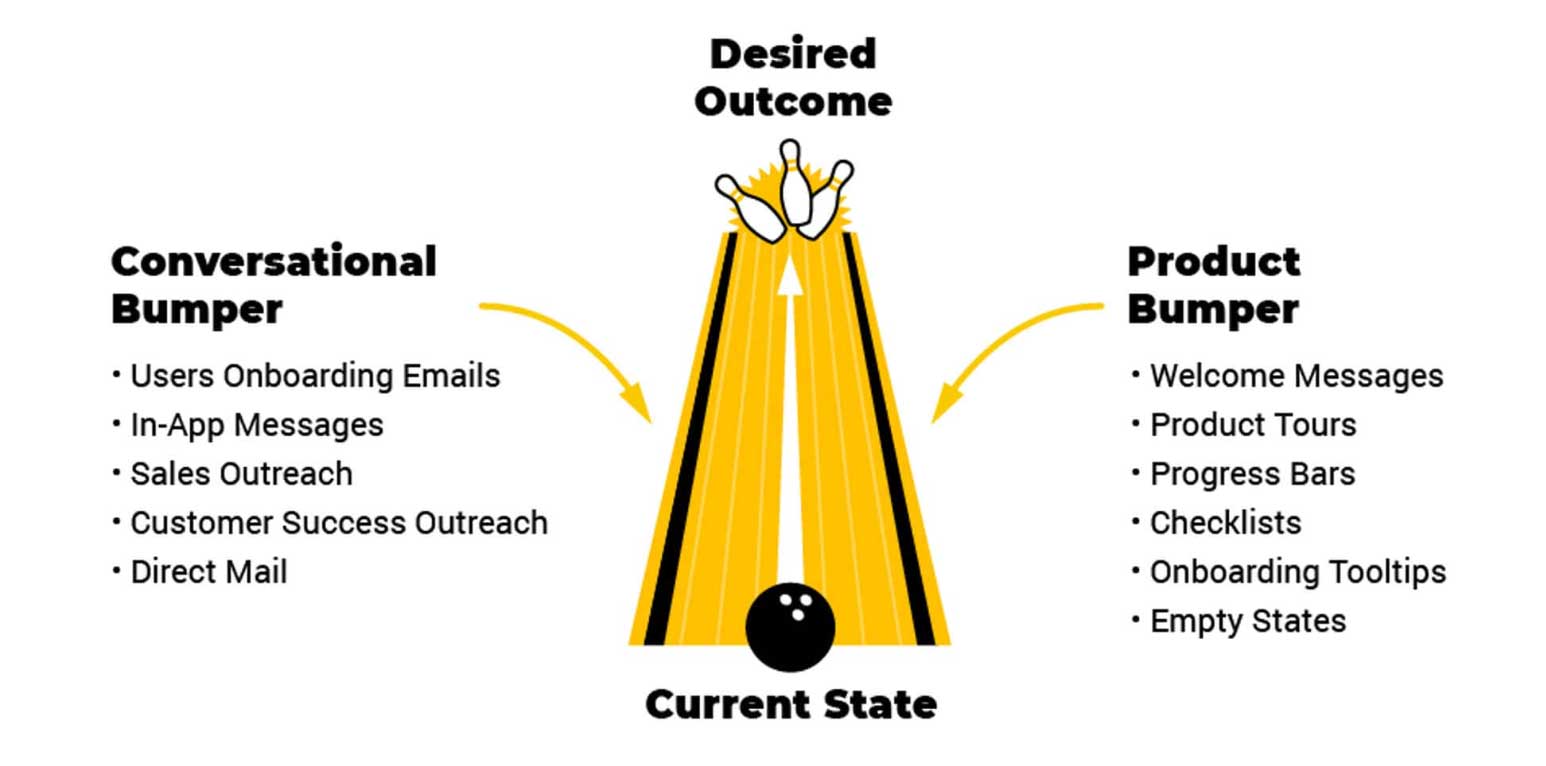The Growth Newsletter #143 143k Followers in 9 days, Bowling-Alley Framework, Sh*tty Clickthroughs. |
Welcome all you growth-loving founders and marketers!
Variety of random things to tell you. I discovered that ChatGPT thinks "Canada" has multiple M's in it. I tested it myself and the results are hilarious.
I saw a powerful admission from Jensen Huang (cofounder and CEO of NVIDIA) that if he could go back, knowing all the pain & suffering he'd endure, he wouldn't start NVIDIA again. Topics for today: 122k Followers in 8 days, Bowling-Alley Framework, Sh*tty Clickthroughs.
Let's dive in 🐙
– Neal |
Thanks to our sponsors for keeping this newsletter free for all of you! Check them out :) |
|
|
Brought to you by Insense—tusted by 1,500+ DTC brands, Insense is the all-in-one platform for UGC and influencer marketing: -
Get matched with creators in minutes,
- Receive UGC within 10 days,
- Build long-term influencer relationships, and
- Run whitelisted ads in 1-click.
Insense is offering our readers $200 platform credit until Nov 3.
Book a free strategy call to claim your offer
|
|
|
And by Vanta.
Growing a business? Achieving security compliance is a critical step to raising capital, selling to larger companies, and building customer trust.
Experience how easy Vanta makes it to get secure & compliant—and stay that way—with a 7-day free trial of their SOC 2 compliance framework and Access Reviews solution. You’ll: -
See exactly what you need to do to be compliant
- Get insights into how to centralize and scale your security program
- Learn how Vanta can save you up to 400 hours and 85% of compliance costs
Start your free trial today—no costs or obligations. |
|
|
Want to be featured in front of 84,100 founders and marketers? Learn more here–booking late-November. |
|
|
1. 500 to 143,000 followers in 9 days
Insight from Chewy Thompson.
Chewy Thompson, a 17 year old, started a daily fitness challenge on his Instagram 8 days ago. Here's his follower progress: - Day 1: 520 followers
- Day 2: 526 followers
- Day 3: 535 followers
- Day 4: 644 followers
- Day 5: 1938 followers
- Day 6: 16000 followers
- Day 7: 50,000 followers
- Day 8: 88,000 followers
- Day 9: 122,000 followers
- Current: 143,000 followers
|
The premise of the fitness challenge is: - For every 1 follower total, he walks 1 inch each day.
- For every 1000 followers total, he does 1 pushup each day.
-
At the end of each daily video, he says, "I'm deleting this channel in (365-X, where X is days into the challenge) days unless I reach 1 million followers."
At 1 million followers, he'll be doing nearly 1,000 push-ups and walking 15 miles per day. He struggled even just doing 1 push-up. I think this works so well because: - It's gamified. The more followers the more he has to do.
- People love watching people suffer. MrBeast's most popular and highest retention videos are of him suffering (in a box underground).
-
It's a heroes journey and people get to follow along and see him get fit.
- He has this big goal of working out with John Cena, and people want to help him.
- There's stakes. He'll delete his account if he doesn't hit 1M followers.
- He's only 17 years old and we want to see him turn his life around.
Of course, there's more to it. Here are the 6 core ingredients of viral content. |
2. Improve onboarding with the Bowling Alley Framework
Insight from Wes Bush from Product-Led. 40~60% of users who sign up will never actually use your product.
So, nailing the onboarding experience is a key way to increase conversion and retention. Wes Bush shares what he calls the "Bowling Alley Framework." Here's what that means: |
|
|
Wes breaks this down in 3 phase: Phase 1: Build your straight line path Your user signs up, and hits the product (current state). You want them to get to the "magic moment" where they discover the value your product brings them (desired outcome). - Step 1: Map out the current path they take from Current State to Desired Outcome.
-
Step 2: Label each step as Green (necessary), Yellow (advanced features, can be introduced later), and Red (can be removed completely, like a phone number field).
- Step 3: Remove all Reds. Delay all Yellows. You want nothing but green lights.
Phase 2: Create Product Bumpers These are elements within the product that push people towards the desired outcome. - Welcome Message: Welcome them in, restate value props, and motivate them.
-
Product Tour: This is a step-by-step tour that hand holds them to the Desired Outcome. Let people opt out if they don't want that.
- Progress Bars: Show their progress to being fully up and running to illustrate they still have stuff to step up. It gamifies onboarding.
- Checklists: Similar to progress bars, show a checklist of the steps remaining.
-
Tooltips: Have tooltips pop up to show them where to click next.
- Empty states: If parts of the UI aren't ready to go yet, have a message that explains why it's empty and link to what they need to do it fill it.
Phase 3: Create Conversational Bumpers Product bumpers only work if they're actually in the product. Often, people will sign up and then bounce. Conversational bumpers are to bring them back into the product.
This includes a lot of different email types, like onboarding, welcome, case studies, trial expiration, and post-trial surveys.
For a deeper dive into all 3 phases, check out Wes' full article. |
3. 4 ad types to increase click-through rates
Insight from Andrew Chen and Neal / Demand Curve The first banner ad in 1994 had a clickthrough rate of 78%: |
Now the average is ~0.35%. A 222x decrease!
Andrew Chen calls this the "Law of Shitty Clickthroughs." Essentially, a new marketing tactic's effectiveness will be short lived. We're drawn to novelty (like the flashing banner ad), but as soon as it becomes common, we tune it out and it stops working. That's why with any marketing, you need to stand the f*&k out (as Louis Grenier would say). But this is particularly true with ads where you're blowing money on every impression. You need to not trigger the "this is an ad" reflex. Here are some ad types that currently help with that: 1. Customer reactions Show a user (or actor's) reaction to using the product. - Dramatic expressions grab attention.
- A lower quality "iPhone" shot or video feels more organic.
- You can showcase your product's "wow" or "magic" moment.
2. Customer testimonials
Social proof is powerful. Share customer text reviews or testimonials. Even better, share a video testimonial. We use Testimontial.to to collect ours—like this one from Alex M H Smith about Unignorable.
3. Unboxing
People love unboxing videos. Oddly, even if it's for a product they know nothing about. There's built in mystery and curiosity, and opening up new products is a pleasurable moment for people so we have positive associations with them. Cut your video to highlight the most exciting moments in the first few seconds. 4. Product walkthrough Have a customer, influencer, actor, or just a team member do a selfie-style walkthrough using the product. It feels natural and let's you show off the product. With all of these, make sure to have a good "hook" to get people invested quickly. And if you're a startup spending <$50k per month in ads (or looking to get them started), our new service, Ad Labs, we can run the ads for you. |
|
|
News you can use: Case study we recommend*: Uplisting Earns $700k in Referral Sales with Do you have a product that grows through word of mouth? You better not sit around and expect the gravy train to never stop. Learn how a property rental SaaS called Uplisting leveraged affiliate marketing to properly track, reward, and grow affiliate-driven revenue.
Dan and his team are currently sitting at more than $700k in revenue from referrals.
Read the full story of how Uplisting managed to grow its MRR by using a set of high-performance Stripe Apps, including Rewardful.
*Sponsored by Rewardful |
|
|
Want to be featured in front of 83,660 founders and marketers? Learn more here–booking into November. |
Something fun tbh not sure if he's joking or not based on his name. |
|
|
What did you think of this week's newsletter?
😍 Loved it | 😄 Great | 🙂 Good | 🤷♀️ Meh | 🤬 Bad
If you enjoyed this, please consider sharing it with a friend. These newsletters take hours to make each week, so it really helps when you share us with fellow founders and marketers.
And if you have any comments/question, I'd love to hear them. Just hit reply!
In case you're new: Who's Demand Curve?
We’re on a mission to help make it easier to start, build, and grow companies. We share high-quality, vetted, and actionable growth content as we learn it from the top 1% of founders and marketers. How we can help you grow: -
Read our free playbooks, blog articles, and teardowns—we break down the strategies and tactics that fast-growing startups use to grow.
- Enroll in the Growth Program, our marketing course that has helped 1,000+ founders get traction and scale revenue.
Want to build an audience of buyers? Join the waitlist for the Un-ignorable Challenge where we teach founders to create unignorable personal brands. -
Are you an ambitious startup/scaleup looking to grow? Our agency, Bell Curve, can be your strategic growth partner.
-
Need to run ads? We’ve built the ads agency for startups.
-
Looking for a growth freelancer or agency? We’ll match you with one for free.
Get your product in front of startup founders by sponsoring this newsletter.
See you next week.
— Neal and Justin |
|
|
© 2023 Demand Curve, Inc. All rights reserved. 4460 Redwood Hwy, Suite 16-535, San Rafael, California, United States
Unsubscribe from all emails, including the newsletter, or manage subscription preferences. |
|
|
|






